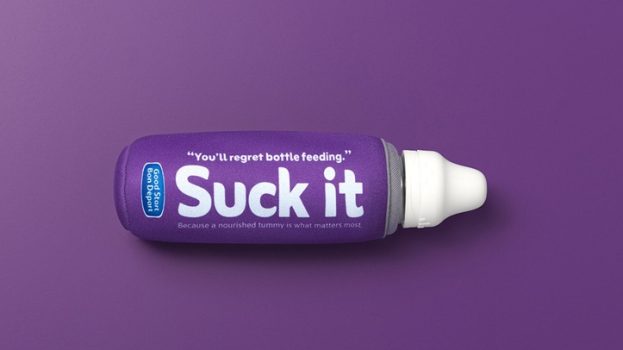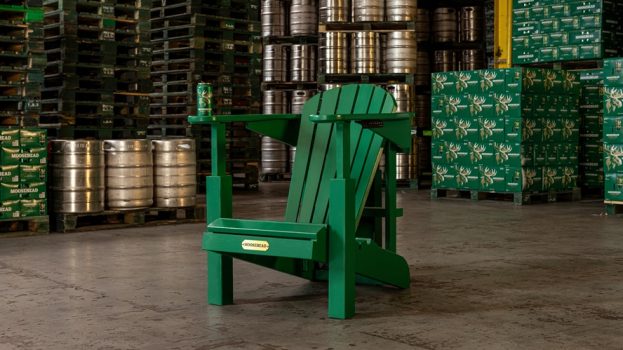The Emperor’s New Clothes is a fairy tale where a weaver promises the Emperor he will create a new suit of clothes that is invisible to anyone not worthy. The Emperor proudly parades his outfit before his subjects – until a child cries out – “But he isn’t wearing anything at all.”
In many ways this story parallels what I see happening in consumer packaged goods where shareholders are demanding aggressive growth and management is making bold promises, all at a time when the marketplace is exposing so many vulnerabilities to their core business model.
The CPGs have a model that has always been one of control and power – out-shout your competitors and overpower the consumer and retailer with voice, presence and the efficiency of mass production.
They no longer have control and their power is waning. The reason why is that capitalism has been fuelled like an unchecked brush fire on a hot, windy day. Global competition, breakthrough manufacturing technology, a marketplace awash in investment capital and the consolidation of the trade with their own appetite for margins has saturated the market with very good but very similar products and there is no drain to absorb the overflow.
Supply far outstrips demand; product differentiation is minuscule at best. The consumer is disengaged, detached and promiscuous when it comes to mass brands and media.
In their letters to shareholders, many multinationals cite the emerging middle class in developing markets to shoulder much of the softness. But my question is will these economies and an increasingly knowledgeable consumer ever support the brand premium that we once paid?
In addition, many are taking big, bold steps. Take Procter & Gamble for example. It has jumped on crowd-sourced innovation and made early investment in social media to build communities of influence. It continues to do some exceptional cross-category innovation with its big brands and it was an early mover in digital and shopper marketing. Recently it announced a strategy to once again cull its herd and eliminate more than 100 of its brands to focus on the ones that matter.
Big, bold step for sure, but is it enough to counter these strengthening headwinds? And if we were completely honest, The Emperor’s New Clothes-like lesson is that most CPG companies are falling back on pricing as their primary tactic – either in the form of encouraging the retailer for preferred placement and/or motivating the consumer to get into her basket. Pricing as your primary volume driver puts you on one track and in one competition and it’s called a race to zero.
On that track, survival and preserving cash flow means doing whatever you can to shed costs to match pricing cuts to make your quarter or even better your year. Head offices get hollowed out and they bring procurement in with a machete to cut costs without being accountable for the consequences like future market share. On this track you ignore the consumers’ appetite for “my” by running efficient global campaigns with one-size-fits-all insights and ads, you cut marketing spend and you RightSize your products. Has anyone eaten a granola bar lately – pretty soon it will have to be called a granola bite.
The senior marketers who remain start acting like emergency doctors in triage – burnt out, they focus on what is urgent, not what is of long-term importance. Their marketing team is no longer hired to spend budgets but to invest them, and most of their day is spent leveraging their supply chains, not striving for consumer engagement. Currency exchange, not consumer exchange, is often the difference between making or breaking your year.
It is difficult, if not impossible, to win long term with this tactic. It’s like putting a Band-Aid on a festering sore.
Pricing as the panacea flies in the face of the rules of capitalism. To be an extraordinary consumer-driven organization you have to be faster at identifying customer needs, better at commercializing the opportunities and more productive with your business of doing business. In doing so, you engage, not bribe, the consumer and the retailer.
Today, however, it looks like the innovation torch has been passed to entrepreneurs, many with the backing of venture capitalists and the support of retailers who are looking for brands to re-engage the consumer and differentiate their space. Walk the perimeter of stores – the prime oceanfront real estate – and you will find artisan, craft and premium private label brands. At one time they were at best a penknife wound to a multinational, but today are stealing meaningful share of presence, market and mind share.
The multinationals have had an extraordinary run, and the goodwill on their balance sheets attached to the value of brands reflects the time when they brought us meaningful innovation. As suppliers and employees we have all done very well by the investments they made in Canada and we can only hope for a comeback.
Can the Goliaths make a comeback in mature markets? It’s tough to bet against the track record of a PepsiCo, P&G or Kraft. To do so they will have to reinvent themselves, and throw out the rules of a game they mastered for decades. They will also have to wean themselves off of price to push their way into the stores and grocery baskets. It will take courage to scale back on short-term profits and to focus on what truly matters, what made them great– meaningful insights, innovation and consumer engagement.
That’s the naked truth.
 Tony Chapman is a keynote speaker and known for his big insights and big ideas. You can reach him at Tonychapmancan@outlook.com
Tony Chapman is a keynote speaker and known for his big insights and big ideas. You can reach him at Tonychapmancan@outlook.com
Image via Shutterstock
























